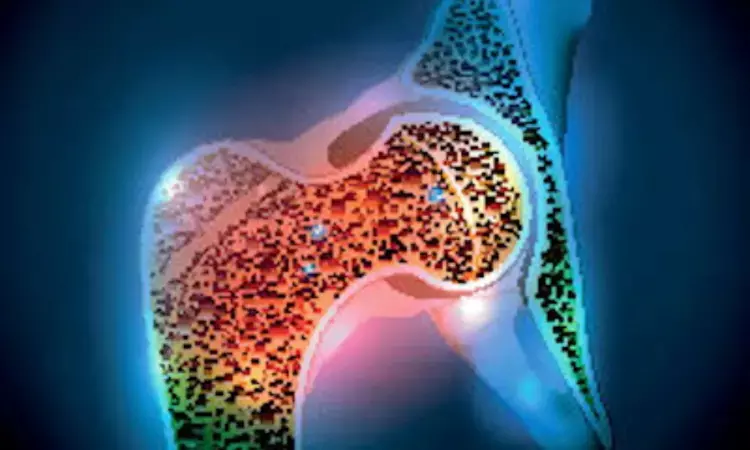- Home
- Medical news & Guidelines
- Anesthesiology
- Cardiology and CTVS
- Critical Care
- Dentistry
- Dermatology
- Diabetes and Endocrinology
- ENT
- Gastroenterology
- Medicine
- Nephrology
- Neurology
- Obstretics-Gynaecology
- Oncology
- Ophthalmology
- Orthopaedics
- Pediatrics-Neonatology
- Psychiatry
- Pulmonology
- Radiology
- Surgery
- Urology
- Laboratory Medicine
- Diet
- Nursing
- Paramedical
- Physiotherapy
- Health news
- Fact Check
- Bone Health Fact Check
- Brain Health Fact Check
- Cancer Related Fact Check
- Child Care Fact Check
- Dental and oral health fact check
- Diabetes and metabolic health fact check
- Diet and Nutrition Fact Check
- Eye and ENT Care Fact Check
- Fitness fact check
- Gut health fact check
- Heart health fact check
- Kidney health fact check
- Medical education fact check
- Men's health fact check
- Respiratory fact check
- Skin and hair care fact check
- Vaccine and Immunization fact check
- Women's health fact check
- AYUSH
- State News
- Andaman and Nicobar Islands
- Andhra Pradesh
- Arunachal Pradesh
- Assam
- Bihar
- Chandigarh
- Chattisgarh
- Dadra and Nagar Haveli
- Daman and Diu
- Delhi
- Goa
- Gujarat
- Haryana
- Himachal Pradesh
- Jammu & Kashmir
- Jharkhand
- Karnataka
- Kerala
- Ladakh
- Lakshadweep
- Madhya Pradesh
- Maharashtra
- Manipur
- Meghalaya
- Mizoram
- Nagaland
- Odisha
- Puducherry
- Punjab
- Rajasthan
- Sikkim
- Tamil Nadu
- Telangana
- Tripura
- Uttar Pradesh
- Uttrakhand
- West Bengal
- Medical Education
- Industry
Fertility-Related Factors May Predict Osteoporosis Risk in Postmenopausal Women, claims research

Researchers have discovered in a new study that infertility, miscarriage, stillbirth, and having fewer children might raise the risk of osteoporosis among women undergoing natural menopause. The large international study concluded that these reproductive factors for health are independently linked to bone loss in older age, and that age at natural menopause doesn't entirely account for these associations. These results indicate that reproductive history may be an important factor in the early recognition of women who are at high risk for osteoporosis, and in steering preventive measures to minimize long-term morbidity. The study was conducted by LIANG Chen and fellow researchers published in the journal of Fertility and Sterility.
This research, undertaken under the auspices of the International Collaboration for a Life Course Approach to Reproductive Health and Chronic Disease Events (InterLACE), combined data from 141,222 naturally postmenopausal women from five cohorts. It was designed to test two overarching hypotheses: whether reproductive difficulties like infertility, miscarriage, stillbirth, and low parity are related to elevated risk of osteoporosis, and whether menopausal age might explain these relationships.
This pooled analysis employed retrospective and prospective data from five cohorts from around the world who belonged to the InterLACE consortium. Excluding women who had undergone unnatural menopause and those for whom reproductive history, osteoporosis status, and covariates were incomplete, the researchers included only those women who met these criteria. Major exposures to infertility, miscarriage, stillbirth, and parity were reported by participants themselves.
Diagnoses of osteoporosis were derived from various sources of data, such as surveys, hospital discharge records, death registers, primary care data, and records of drug use. Cox regression models were used by researchers to calculate hazard ratios (HRs) and 95% confidence intervals (CIs) for the association between factors related to fertility and osteoporosis risk. Models were also adjusted for key covariates including race, age, education, smoking, alcohol consumption, BMI, physical activity, and age at menarche, with a further step adjusting for age at natural menopause as a time-varying covariate.
Key Findings
• Modest but persistent elevated risks of osteoporosis in women with unfavorable reproductive histories were found by the study:
• Infertility history was linked with a 16% increased risk of osteoporosis (HR=1.16, 95% CI: 1.13–1.19).
• Women with three or more miscarriages had 17% increased risk (HR=1.17, 95% CI: 1.05–1.30).
• Those who had stillbirth had 14% increased risk (HR=1.14, 95% CI: 1.10–1.17).
• No live births: HR=1.20 (95% CI: 1.15–1.25)
• One live birth: HR=1.15 (95% CI: 1.14–1.16)
This big international study verifies that infertility, habitual miscarriage, stillbirth, and low parity are associated with higher risk of osteoporosis in naturally postmenopausal women. These relationships remained significant even after controlling for age at menopause, indicating an independent contribution of reproductive factors in bone health. Physicians can think of these reproductive markers as preliminary indicators for osteoporosis risk assessment and individualized prevention measures.
Reference:
Chen, L. I. A. N. G., Chung, H.-F., Anderson, D. J., VAN DER Schouw, Y. T., Avis, N. E., Karvonen-Gutierrez, C. A., Dobson, A. J., & Mishra, G. D. (2025). The association of infertility, miscarriage, stillbirth, and parity with osteoporosis: a pooled analysis of five cohort studies. Fertility and Sterility.https://doi.org/10.1016/j.fertnstert.2025.07.382
Dr Riya Dave has completed dentistry from Gujarat University in 2022. She is a dentist and accomplished medical and scientific writer known for her commitment to bridging the gap between clinical expertise and accessible healthcare information. She has been actively involved in writing blogs related to health and wellness.
Dr Kamal Kant Kohli-MBBS, DTCD- a chest specialist with more than 30 years of practice and a flair for writing clinical articles, Dr Kamal Kant Kohli joined Medical Dialogues as a Chief Editor of Medical News. Besides writing articles, as an editor, he proofreads and verifies all the medical content published on Medical Dialogues including those coming from journals, studies,medical conferences,guidelines etc. Email: drkohli@medicaldialogues.in. Contact no. 011-43720751


